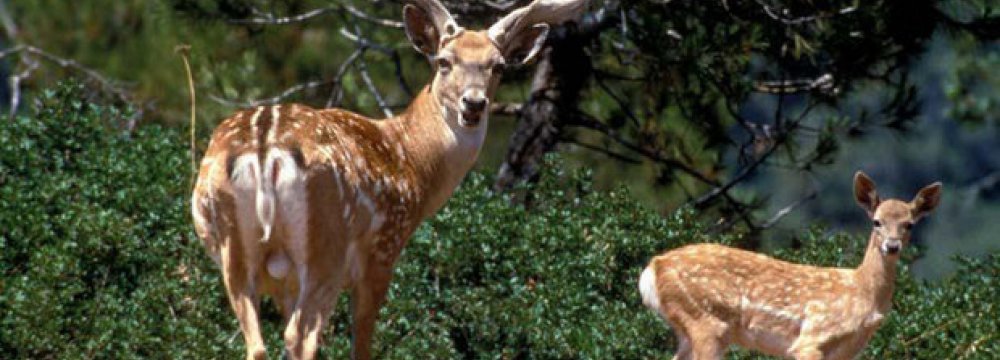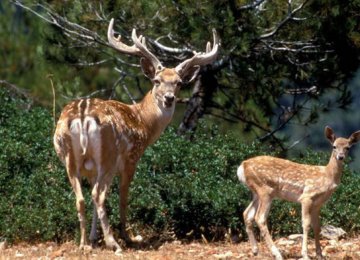Population of the Persian fallow deer is expected to gradually grow following the expansion of its territory in Fars Province’s Miankotal enclosure.
The deer was previously confined to a 50-hectare area in Miankotal, which was inappropriate due to sparse vegetation and incompatible topography and microclimate.
“The scarce fallow deer population can now roam within a 400-hectare expanse with everything it needs to thrive,” Hamzeh Valavi, director of the provincial Department of Environment, was quoted as saying by IRNA.
Over the years, the population of this unique species saw a massive decline in the southern province as it was forced to live in habitats incompatible with its needs.
“Their numbers dropped from 70 to 30 in just a few years,” the official said, adding that the national breeding and protection program has helped to lift their population.
He attributed the rise in the Persian fallow deer’s numbers to better care, food quality, but most important to the change in the habitats.
“They had to survive in rugged regions, which they’re not used to, but now they roam the grasslands and steppes,” Valavi said, adding that he expects the population of the rare animal to reach 40 before the current Iranian year is out next March.
Miankotal is a region located between the cities of Shiraz and Kazeroun, 150 kilometers southwest of provincial capital Shiraz.
Also known as Mesopotamian fallow deer, the rare animal has been listed as an endangered species under the International Union for Conservation of Nature’s Red List since 1986. Up until the 1940s, the animal was thought to be extinct.
Native to Iran, the Persian fallow deer can be found in Dasht-e-Naz Wildlife Refuge and Semeskandeh Wildlife Refuge in northern Iran, the Ashk and Kaboudan Islands in Lake Urmia and in Fars’s Miankotal enclosure in the Arzhan and Parishan protected zones.





